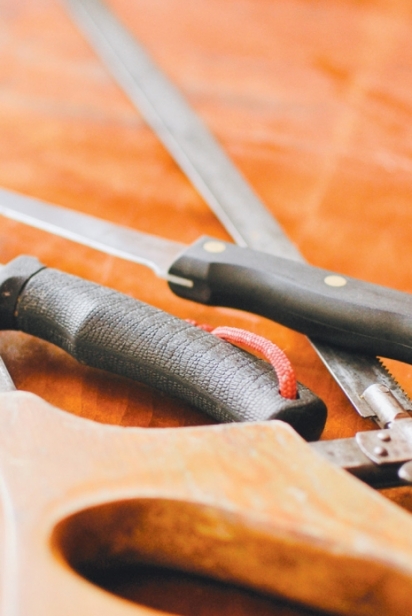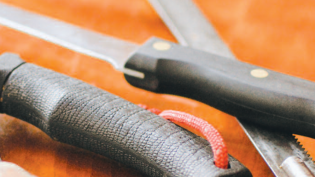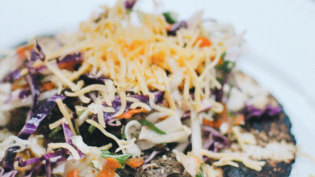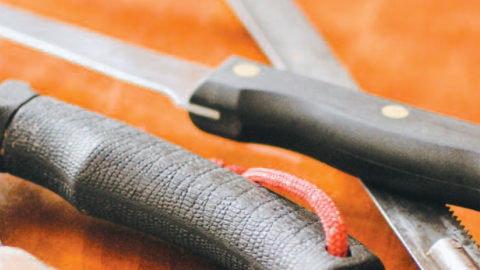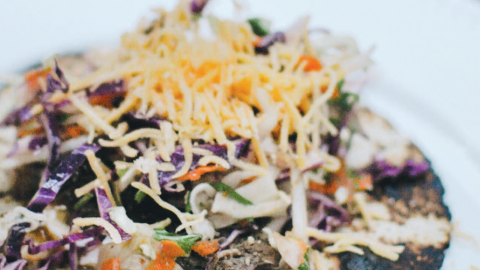Wild Thing: Venison
I am guilty. So before I point the finger let me come clean: In my previous years as a deer hunter it was tenderloin, backstrap and perhaps some steaks and stew meat. That left the remainder of the animal going to the grinder. Which was fine, since there are so many uses for ground meat.
Yet beyond ground burger, hiding behind the fascia and ligaments there are cuts of meat that few even acknowledge, much less take the time to butcher or prepare.
Shanks, flanks, ribs and necks—many hunters turn up their nose at these cuts when the thought of making them table fare crosses their minds. Shanks are too tough, the ribs and flanks have no meat. Cooking a whole neck, you can do that? Many hunters tragicallyleave these cuts of meat in the woods, or simply don’t understand their options when they drop off their deer to be processed.
Now bear with me while I make a case for these cuts of meat, why they shouldn’t be destined for the grinder or the coyotes, and why next time you might be reaching for them before the tenderloins.
If you’re a reader who raises their eyebrows when they think venison, do me a favor and give it another shot with someone who knows how to cook. Most people who have been turned off to venison did so because it wasn’t prepared properly, and everything deserves a second chance.
This article is directed to those who process their deer at home, or to give you some guidance next time you drop your deer off at the processor. If do-it-yourself processing frightens you, I encourage you to give it a try. Not only does it force you to develop a more intimate connection with the animal you just harvested, it opens up a whole new world in terms of cuts of meat, preparation and cooking (did I mention bragging rights?).
The tools needed for do-it-yourself will pay for themselves after just a few years. A meat grinder, bone saw, sharp knife and a roll of butcher paper will do just fine. The grinder is the largest expense—for a small fee, local butchers will grind your meat for you, saving you the equipment costs.
But separating the meat from tendons and connective tissue that you do not want in your ground meat can take a lot of time, especially with hardworking cuts of meat like shanks. DIY butchering of whole cuts on the bone can save a lot of processing time, and the benefits go beyond impressing your family and friends with succulent, velvety braised shanks, it also gives you the flexibility to dry age venison, which is a topic for another day.
COOKING
Besides the flanks, which really shine with hot and fast grilling, all the cuts discussed here require a little patience in order to make them table-worthy. Low and slow is the name of the game. Cooking any of these meats without some sort of liquid and indirect heat source will result in tough, grey, gamey meat.
The best part is, the preparation is simple and, in most cases, you can do the prep in the morning and have a delicious meal waiting for you when you come home.
SHANKS
Think shinbone—the shank connects the foot to the thigh. Shanks are full of connective tissue, tendons, ligaments and fascia that demand slow and low cooking. These ligaments can clog a meat grinder, making it a tedious process to turn into burger. This sometimes means a butcher will leave them out of the processing equation entirely. Please stop. I’m begging you. A braised venison shank is right up there with a well-cooked backstrap—first date worthy. If you’ve ever tried to separate all the layers of tendons and fascia in a shank to grind, you know it’s a lot of waste. Leave them whole and you’ll have one of the tastiest cuts of meat in your freezer.
FLANKS
The flank is the layer of meat that wraps around the sides of the deer, underneath the paunch. This cut on most deer isn’t usually much to get excited about. Although with a mature animal it can be a unique cut of meat, most people simply leave it in the woods or grind it up. Flanks take a marinade extremely well. Cook them hot and fast and then slice across the grain for fajitas.
NECKS
Probably my favorite cut of meat—that’s right, even more then a tenderloin or backstrap. If you’ve ever tried to bone out a neck to use for ground meat, it’s like a fleshy jigsaw puzzle. Some hunters even have the audacity to leave this cut in the woods, which is a real shame. The neck provides great meat, and when left whole, makes an even better roast that saves time on the processing table. Large animals can even yield multiple roasts.
RIBS
Be patient with this one. To many folks, the amount of meat that comes from the ribs just isn’t worth the hassle. Sometimes I get that, if it’s a young animal. But I still encourage you to try venison ribs—with a mature animal, they can be a real treat. Sure, they take a long time to cook and might not yield a lot of meat for a large crowd, but these savory tender ribs are unlike anything you’ve tried before. Get comfortable: Braised ribs can take awhile, though a pressure cooker can really speed things up. I like to finish them on the grill for a smoky flavor and a charred finish. I’ve put plenty of venison ribs in front of uninformed guests, everyone is always surprised to learn they aren’t beef or pork ribs.



